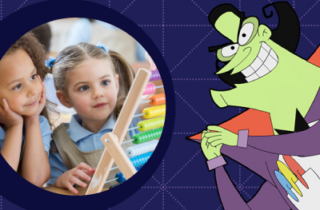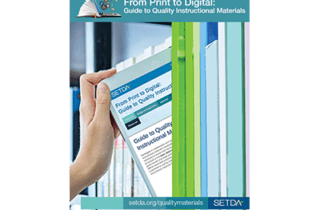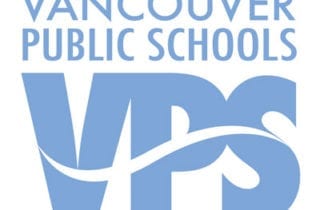Presented by KJ Vanderiet, Senior Content Producer, WNET Kids’ Media and Education; Bob Krech, Writer, Elementary Math Consultant, and Advisor for PBS Cyberchase, WNET; and Islah Tauheed, Vice Principal for Newark Public Schools (NJ)
Presented by Vanessa Lombardo, Training and Learning Manager, Bookshare, an Initiative of Benetech
Presented by DeVonté Bailey, Social Video Specialist, Oklahoma Educational Television Authority and Jobs Explained; Scott Jackson, ESL and U.S. History Teacher, Brooklyn International High School (NY); and Aaron Siegel, Project Director, American Graduate: Jobs Explained, WNET
Presented by Jackie Kavege, Senior Director, Community Engagement, Discovery Education
A pilot program of the State Educational Technology Directors Association (SETDA) has made 12 states’ reviews of secondary math and language arts materials available, with a wide range of K-12 resources from these and other states to follow. As explained by Christine Fox, Deputy Executive Director of SETDA, during a recent edWebinar, this searchable information will help educational leaders ensure that the materials they purchase are high-quality, aligned with their standards and goals, and accessible to all students.
This edWebinar will launch SETDA’s latest resource, the State K12 Instructional Materials Database, an online tool to access state-reviewed, full course instructional materials for secondary language arts and math.
Questioning the quality of instructional materials isn’t new to the digital education era. But with the rise of OER, growing use of supplemental resources over core textbooks, and the increasing flexibility of state funding, more purchasing decisions have moved to the school and district level. Thus, there is the potential for more disparity in the quality of materials from school to school. Confronted by concerns from their members that schools and districts might not be buying the best quality resources, SETDA updated its Guide to Quality Instructional Materials, which was introduced during the edWebinar “From Print to Digital: Discover and Implement Quality Instructional Materials for Learning.” The emphasis of the Guide, said Christine Fox, Deputy Executive Director for SETDA, is not on critiquing specific content but in helping educators develop an ongoing review process and giving content providers a concrete outline for how the process should work.
It is rare that things go as planned after selecting or purchasing new digital content, services, and tools. Building a culture of shared understanding and cross-departmental responsibility for how digital integration is approached is crucial to the success of any digital strategy. In a recent edWebinar, presenters from Vancouver Public Schools in Washington shared their processes for selecting and integrating digital content and resources to ensure effective implementations.
As a growing number of school districts are turning towards digital tools to support teaching, it’s important to ensure that these tools are adding value by transforming learning experiences. The SAMR model (Substitution, Augmentation, Modification, Redefinition) and TPACK model (Technological Pedagogical Content Knowledge) can help schools as they transition to using more digital tools. In a recent edWebinar, Michelle Luhtala, Library Department Chair, New Canaan High School, CT, reviewed these models and discussed apps that can take teaching, learning, and reading to the next level.
Many schools and districts are prioritizing the adoption of digital content and curricula, but the challenges of effectively evaluating, selecting, and implementing solutions still persist. However, with the right tools, technology can improve student achievement and empower educators. In “The 21st Century District’s Framework for Evaluating Digital Curriculum,” Dr. Tim Hudson reviewed important steps in finding the right digital curricula for your students’ needs.










